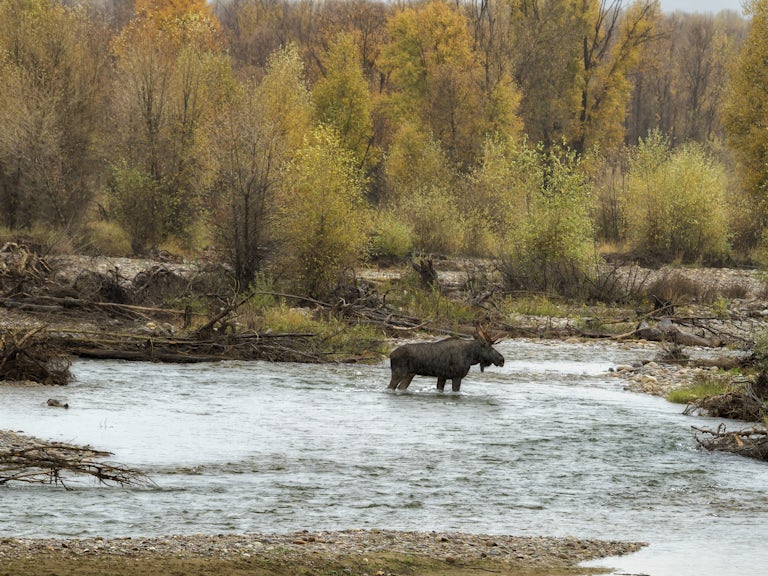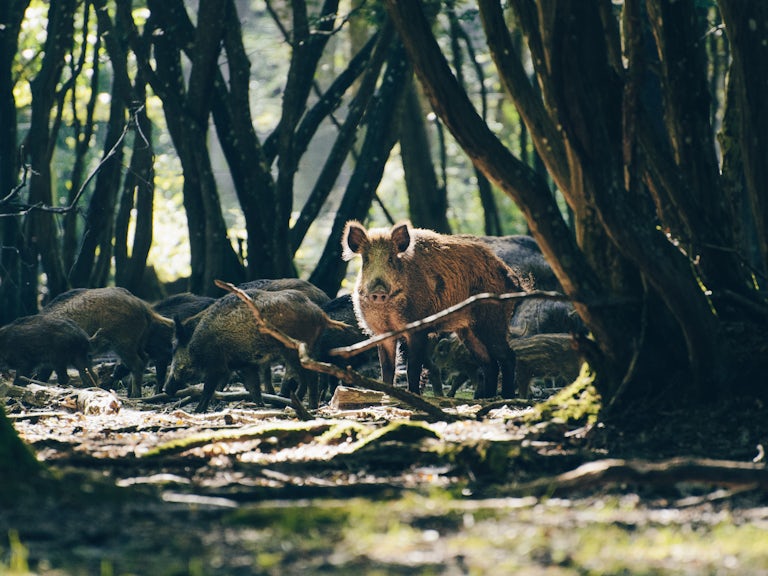Wild boar (pig)
Sus scrofa
This woodland rootler is a resilient churner of earth, breaker of bracken and habitat regenerator.

How it shapes the landscape
Wild boar is the quintessential soil ecosystem engineer. It ploughs up the soil in woodlands and grasslands in search of tasty bulbs, tubers, grubs and buried acorns. Breaking up the sward clears space for the seeds of annual wildflowers, shrubs and trees to germinate. Disturbed ground provides warm basking spots for grasshoppers and burrowing opportunities for myriad species of bees, wasps and beetles. By exposing buried seeds, boar provide access to food for hungry birds during the leanest months. Their droppings also spread mycorrhizal fungal spores, which in turn help trees to thrive.
Wild boar love to wallow, especially in summer when they need to keep cool. They create their own mud pools, which provide a home for amphibians, dragonflies and aquatic plants. These ‘mini wetlands’ also attract a variety of animals in need of a bath or a drink, and even feed egrets and storks. Boar wallows are especially important in places where beavers can’t go, and in times of low rainfall they can stay wet long after more exposed water sources have dried up.
Where it likes to be
Wild boar spend most of their time in woodland, but they are remarkably adaptable. In many parts of the world they have proven themselves able to forage and find shelter even in our cities.
How much space they need
A good amount of space is needed for wild boar. A small number of Tamworth pigs, standing in for wild boar at the Knepp Estate in Sussex, have taken well to their wild surroundings, and it’s thought that one pig can plough up around 40 acres a year. Under natural conditions, wild boar constantly move through the landscape, ensuring that they do not create too much disturbance in any particular area.
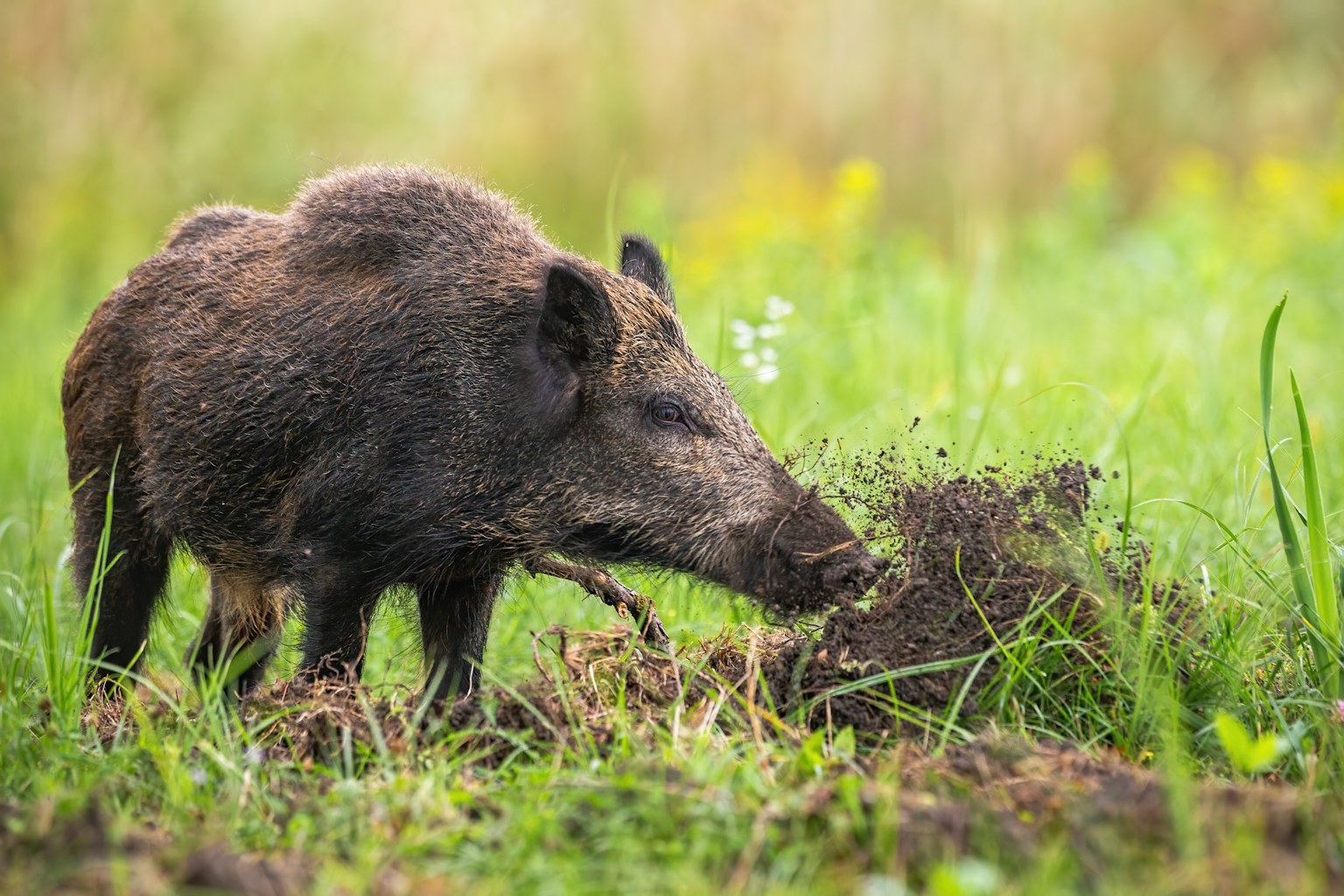

Did you know?
Wild boar have an exceptional sense of smell, surpassing even that of dog.
Background story
Once common in wooded country, the wild boar lost ground in Britain as agriculture ate into and fragmented its forests. It finally succumbed to over-hunting and control to safeguard crops in the 13th century. However, from the 1980s onwards, farmers in the UK began importing wild boar from mainland Europe to raise them for their meat. Brave escapees have led to the re-establishment of wild populations in England and Scotland.
The wild boar remains something of a fugitive in the British countryside. Current free-living populations are not recognised as a wild native species. The Dangerous Wild Animals Act (1976) prevents the reintroduction of the species to the wild. Domesticated pigs, such as the Tamworth, can play a similar ecological role. Although wild boar like nothing more than rootling around in woodland and glade soils, they are omnivorous and will eat a wide range of food when the opportunity arises. This can cause problems when they happily plough through a horse’s paddock, the prized turf of a village green or farm crops.
Many rewilding projects use pigs as proxies for wild boar, to replicate some of these behaviours. While pigs and wild boar are related, centuries of selective breeding have shaped pigs to possess traits deemed desirable by humans, such as increased meat yield, distinct teeth, and altered eating habits.
The value of boar meat makes sustainable control and management possible. Boar have been known to become aggressive when protecting their young, although the risk of being injured by one is extremely low. However, boar particularly dislike domestic dogs, which they regard as too close to wolves for comfort.
In summary
- Keystone species
- Root for food on the woodland floor, in glades and larger grasslands
- Their rooting and digging disturb the earth, creating many niches for plants and animals alike
- Create their own muddy wallows, which in turn attract a multitude of wildlife
- Not possible to reintroduce wild boar at this time due to legislation – domestic old breeds, such as Tamworths, are worthy surrogates

Rewilding in action
Species like the wild boar are the missing puzzle piece for many ecosystems across Britain.
Find out about the projects putting rewilding into action through the reintroduction of wild boars by searching the Rewilding Network map using the species filter.

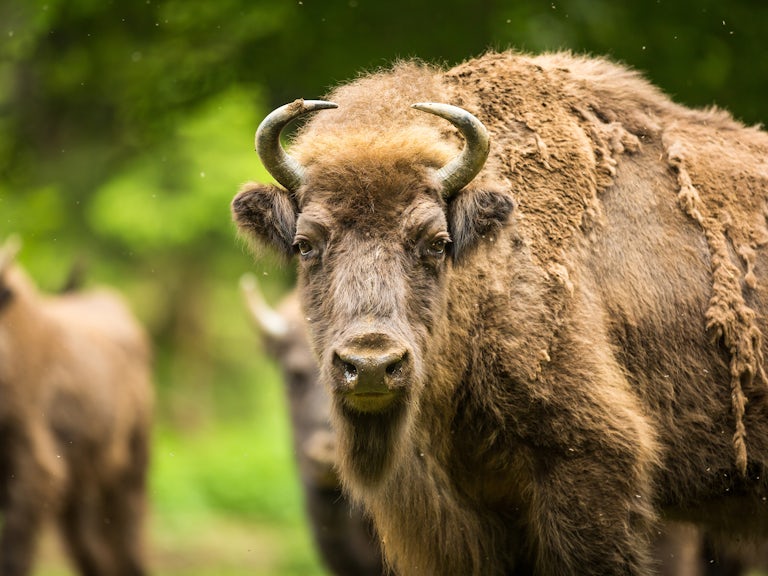
Donate
Nature and climate are in crisis. Rewilding brings hope. Be part of the solution.
Make a donation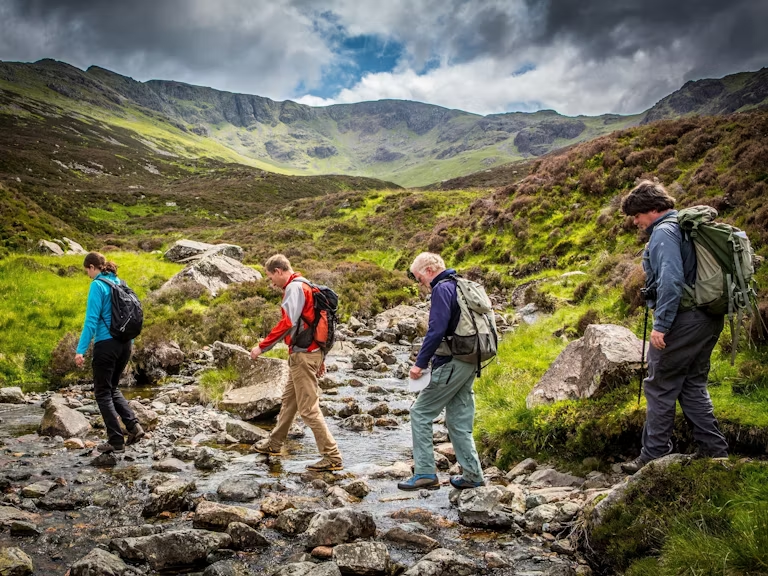
Visit a rewilding project
See rewilding in action at Rewilding Network member projects.
Plan a wild day out